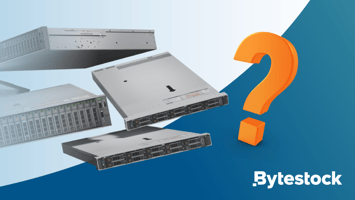In the ever-evolving landscape of IT, you may be wondering what's actually working behind the...
NVIDIA A100 and H100 GPU: A Comparison

When it comes to high-performance computing, few names turn heads quite like NVIDIA. Their data centre GPUs have been powering breakthroughs in AI, analytics, and simulation for years—and their flagships, the A100 and H100, are no exception.
But what do these GPUs actually do? What’s the difference between them? And more importantly—how do you know which one is the right fit for your business?
Let’s break it all down.
First things first—what are the A100 and H100?
The NVIDIA A100 and H100 are high-performance GPUs built for data centres, designed to accelerate everything from artificial intelligence and machine learning to data analytics and high-performance computing (HPC). Think of them as the engine rooms behind some of today’s most advanced technologies. The A100, built on NVIDIA’s Ampere architecture, set a new standard for AI training and inference when it launched—offering impressive flexibility across multiple data types and workloads. The H100 takes things a step further. Powered by the newer Hopper architecture, it introduces faster memory, support for FP8 precision, and significantly boosted performance for large-scale AI models—especially those powering generative AI and language processing. Both are powerhouse GPUs, but tailored for slightly different stages of the AI journey.
The key differences: Speed, Architecture and AI performance
If you’re weighing up the two, here are some of the biggest things to consider:
| Feature | A100 | H100 |
| Architecture | Ampere | Hopper |
| GPU Performance | 40GB / 80GB (HBM2) | 80GB (standard) / 94GB (NVL) |
| Tensor Performance |
Supported by FP64, FP32, TF32, FP16, BFLOAT16, INT8, INT4 Up to 624 TFLOPS & 1248 TOPS (with sparsity) |
Same (with improved speed and FP8 support) 4× faster than A100 Up to 3,958 teraFLOPS & 3,958 TOPS |
| NVLink Bandwidth | 600 GB/s | 900 GB/s |
| AI Capabilities | Flexible, well-rounded | Next-gen, built for scale |
| PCIe Gen | Gen4: 64 GB/s | Gen5: 128GB/s |
Use cases: Where each GPU fits best
Let’s say your business is exploring AI, data science, or scientific simulations. Here’s a rough idea of where each card makes sense:
Go for the NVIDIA A100 if:
- You’re training smaller to mid-size AI models
- Your workloads are well-established and don’t require intense AI acceleration
- You need great performance without stretching the budget
- You're scaling horizontally (adding more GPUs), not vertically (supercharged compute per GPU)
Choose the NVIDIA H100 if:
- You’re building or running generative AI models or LLMs
- You need to dramatically reduce training/inference time
- Your infrastructure supports PCIe Gen 5 or NVLink 4.0
- You’re working on future-proofing your compute stack for tomorrow’s workloads
It all comes down to your priorities:
- Performance vs Cost – The A100 is more cost-effective for many applications and still very powerful.
- Future-proofing – The H100 offers high performance for emerging AI workloads, but it comes with a premium.
- Infrastructure readiness – Are your servers ready to support PCIe Gen 5 or the thermal demands of H100s?
If you're unsure, that’s where we come in.
Need a hand making the call? Let’s talk.
At Bytestock, we help businesses figure out what works best for them. Whether you're scaling up your projects, upgrading your server fleet, or just need advice from someone who speaks your language (and won’t throw unnecessary jargon at you), we’re here to help.
Let’s chat about what you’re working on—and how we can help you do it better, faster, and more affordably.



-1.png?height=200&name=MicrosoftTeams-image%20(21)-1.png)

